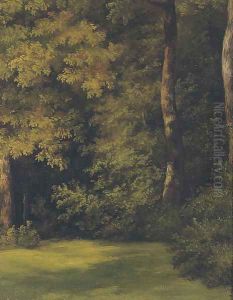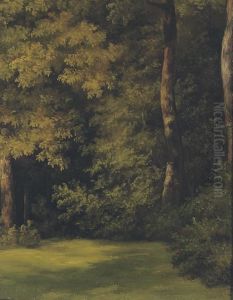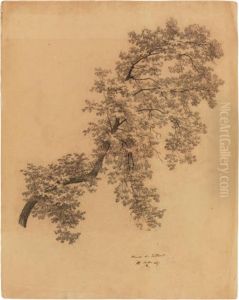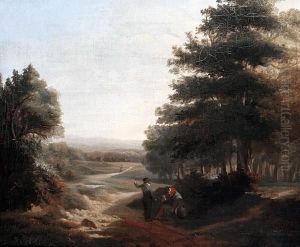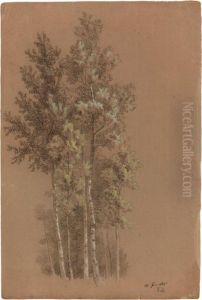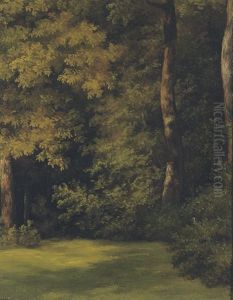Jean-Michel Cels Paintings
Jean-Michel Cels was a Belgian landscape painter born in Brussels in 1819. His artistic journey began in an era when European art was transitioning through Romanticism into Realism, and Cels found his niche within the landscape genre, capturing the serene beauty of the Belgian countryside with a remarkable sense of realism and attention to detail. Unlike the grandiose and often dramatized landscapes of the Romantic painters, Cels' work showcased a more subdued and realistic interpretation of nature, which resonated with the emerging Realist movement of the mid-19th century.
Cels was trained at the Royal Academy of Fine Arts in Brussels, an institution that played a crucial role in shaping the careers of many Belgian artists of the time. His education there equipped him with the technical skills and artistic sensibilities that would define his career. Throughout his life, Cels remained closely connected to his homeland, drawing inspiration from its rural landscapes and urban vistas. His paintings often depict the Belgian countryside in meticulous detail, reflecting his profound appreciation for his surroundings and his ability to capture the essence of a place.
Despite his talent and contribution to Belgian art, Jean-Michel Cels did not gain the same international fame as some of his contemporaries. However, within Belgium, his work was highly regarded, and he participated in numerous exhibitions, earning accolades for his ability to convey the tranquility and beauty of the natural world. Cels' paintings are characterized by their vibrant yet naturalistic color palette, precise brushwork, and a clear focus on the interplay of light and shadow, which gives his landscapes a vivid sense of depth and atmosphere.
Jean-Michel Cels passed away in 1894, leaving behind a legacy that, while perhaps not as widely recognized globally, remains an important part of Belgium's artistic heritage. His dedication to capturing the essence of the Belgian landscape has earned him a place among the notable landscape painters of the 19th century. Today, his work is preserved in several Belgian museums, where it continues to be appreciated by art lovers and critics alike, offering a window into the serene and picturesque landscapes of 19th-century Belgium.
